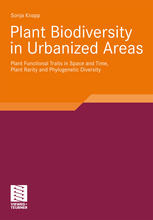

Most ebook files are in PDF format, so you can easily read them using various software such as Foxit Reader or directly on the Google Chrome browser.
Some ebook files are released by publishers in other formats such as .awz, .mobi, .epub, .fb2, etc. You may need to install specific software to read these formats on mobile/PC, such as Calibre.
Please read the tutorial at this link: https://ebookbell.com/faq
We offer FREE conversion to the popular formats you request; however, this may take some time. Therefore, right after payment, please email us, and we will try to provide the service as quickly as possible.
For some exceptional file formats or broken links (if any), please refrain from opening any disputes. Instead, email us first, and we will try to assist within a maximum of 6 hours.
EbookBell Team

0.0
0 reviewsUrbanization is one of the main drivers of global change. It often takes place in areas with high biodiversity, threatening species worldwide. To protect biodiversity not only outside but also right within urban areas, knowledge about the effects of urban land use on species assemblages is essential.
Sonja Knapp compares several aspects of plant biodiversity between urban and rural areas in Germany. Using extensive databases and modern statistical methods, she goes beyond species richness: Urban areas are rich in species but plant species in urban areas are closer related to each other than plant species in rural areas, respectively. The urban environment, characterized by high temperatures and frequent disturbances, changes the functional composition of the flora. It promotes e.g. short-lived species with leaves adapted to drought but threatens insect-pollinated or wind-dispersed species. The author claims that the protection of biodiversity should not only focus on species richness but also on functional and phylogenetic diversity, also right within urban areas, to preserve a flora with a high potential for adaptation to changing global conditions.